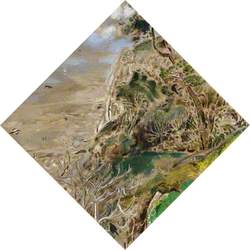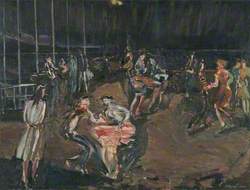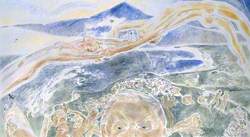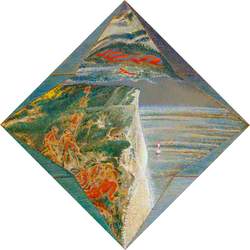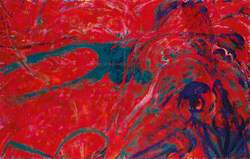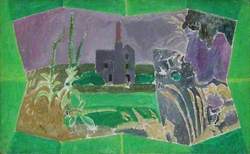How you can use this image
This image can be used for non-commercial research or private study purposes, and other UK exceptions to copyright permitted to users based in the United Kingdom under the Copyright, Designs and Patents Act 1988, as amended and revised. Any other type of use will need to be cleared with the rights holder(s).
Review the copyright credit lines that are located underneath the image, as these indicate who manages the copyright (©) within the artwork, and the photographic rights within the image.
The collection that owns the artwork may have more information on their own website about permitted uses and image licensing options.
Review our guidance pages which explain how you can reuse images, how to credit an image and how to find images in the public domain or with a Creative Commons licence available.
Notes
Add or edit a note on this artwork that only you can see. You can find notes again by going to the ‘Notes’ section of your account.
The bright white cliffs of England’s south coast have long served the national imagination. However their pristine appearance, as opposed to the grubbier cliffs of Dieppe across the Channel, is due to erosion, something that Jeffery Camp has observed with minute detail over many years. In the 1970s, Camp was living with his wife in Hastings, just a short drive away from the famous headland, Beachy Head. Its great height grants unparalleled views, but also makes it one of the most notorious suicide spots in the world. It is one of Camp’s prevailing subjects, since, ‘until a policeman told me how humans jumped’, Camp recalls, ‘I had concentrated on the splendour of vast spaces.’ Camp was born on the outskirts of Lowestoft, a fishing town on the cold North Sea, not a sensual place.
Title
Beachy Head, Stars
Date
1973
Medium
oil on canvas
Measurements
H 126 x W 126 cm
Accession number
P6436
Acquisition method
purchased from Browse and Darby, 1995
Work type
Painting



